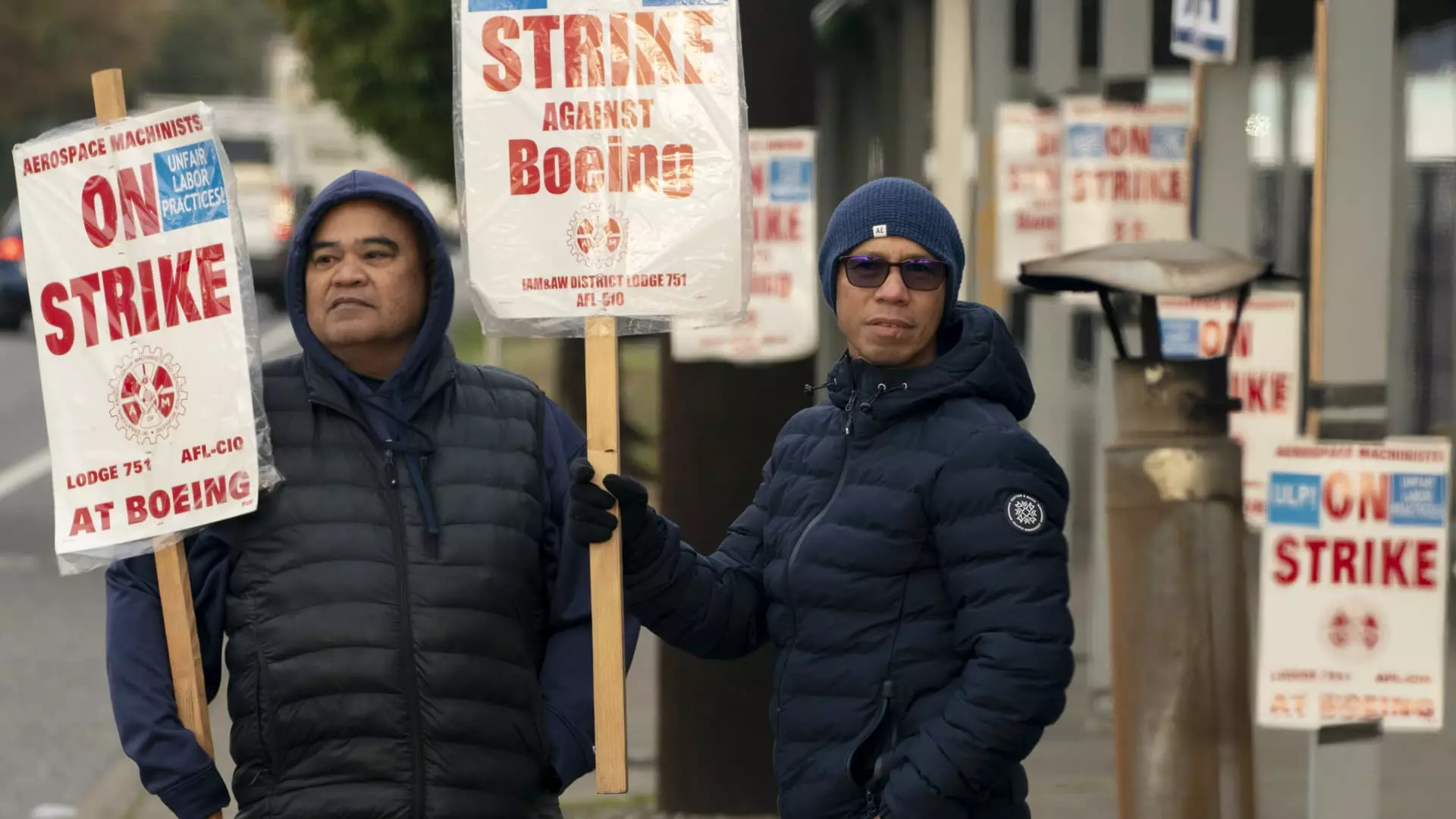In September 2023, Boeing faced a significant challenge as more than 33,000 machinists struck after rejecting a proposed labor contract that was backed by their union, the International Association of Machinists and Aerospace Workers. This labor action marked the first strike for Boeing’s machinists since 2008, highlighting the increasing tensions between the company’s workforce and management. The strike emerged amidst a backdrop of economic uncertainty and was expected to have far-reaching implications not just for Boeing, but also for the U.S. economy as a whole.
The strike began on September 13 and lasted for more than seven weeks, culminating in an unsettling climate for Boeing as it navigated a leadership transition under newly appointed CEO Kelly Ortberg. The rejection of the initial proposal, which promised a wage increase of 35%, underscored the machinists’ desire for better compensation and working conditions amidst rising costs of living. The fact that such a substantial number of employees were willing to walk off the job points to a broader dissatisfaction that could reverberate throughout the manufacturing sector.
As the strike unfolded, economists speculated about its impact on the U.S. jobs report released in early November, the last before the presidential elections. Estimates suggested a potential job growth of only 100,000 in October, with Bank of America predicting that strike-related disruptions would reduce this figure by at least 50,000. The confluence of the machinist strike and natural disasters, such as Hurricanes Helene and Milton, further compounded the uncertainty surrounding job numbers.
Federal Reserve Governor Christopher Waller highlighted these factors, indicating that the job losses represented by the strike could have a temporary but significant impact on the employment landscape. While the immediate consequences of such strikes can be quantified, the longer-term effects—especially considering job cuts and company restructuring—remain more ambiguous. This complexity emphasizes the challenges federal surveys face in capturing the fluid nature of employment fluctuations stemming from strikes and potential layoffs.
The tumultuous strike comes at a critical juncture for Boeing, which is already grappling with safety, quality, and financial crises that have plagued the company in recent years. Under CEO Kelly Ortberg, who took the reins only a few months prior, Boeing is undergoing a significant transformation. Ortberg announced plans to streamline operations by cutting up to 17,000 jobs globally—approximately 10% of the company’s workforce. This move is intended to optimize efficiency by reducing overhead costs that Ortberg claims have hindered employee productivity.
However, layoffs pose an additional layer of complexity, particularly in a labor market that remains volatile. Economists observe that the timing and scope of these layoffs are harder to predict than strikes, which are typically more defined in terms of participation and duration. Boeing’s strategy to downsize emphasizes a focus on its core business sectors, but it raises questions about the potential impacts on employee morale and the company’s reputation in the labor market.
The ramifications of Boeing’s strike extend beyond its direct workforce; they also pose risks to the entire aerospace supply chain. Companies such as Spirit AeroSystems, a supplier for Boeing, were already feeling the pressure as they announced furloughs and potential job cuts due to the strike’s disruption. With around 700 workers in Wichita, Kansas, facing a 21-day furlough, Spirit AeroSystems hint at possible further layoffs if the strike persists.
This precarious situation underscores the interconnectedness of the aerospace manufacturing sector, where a single major player’s labor issues can cascade through the network of suppliers, adversely affecting employment and economic stability within localized economies. The unfolding drama of labor negotiations highlights the critical balance needed between corporate restructuring and workforce stability, as the ripple effects of these decisions can lead to broader economic consequences down the line.
Boeing is enveloped in a complex web of labor disputes and strategic reconfigurations at a time when economic indicators are already proving unpredictable. While the machinist strike reflects growing discontent among employees regarding wages and working conditions, the implications stretch much further. As Boeing navigates through these turbulent waters, the effects of the strike could reshape not only its internal dynamics but also the employment landscape across the broader aerospace sector, necessitating careful monitoring in the months to come. The balance between maintaining company integrity and employee satisfaction remains as crucial as ever in ensuring sustainable growth and stability within this critical industry.

